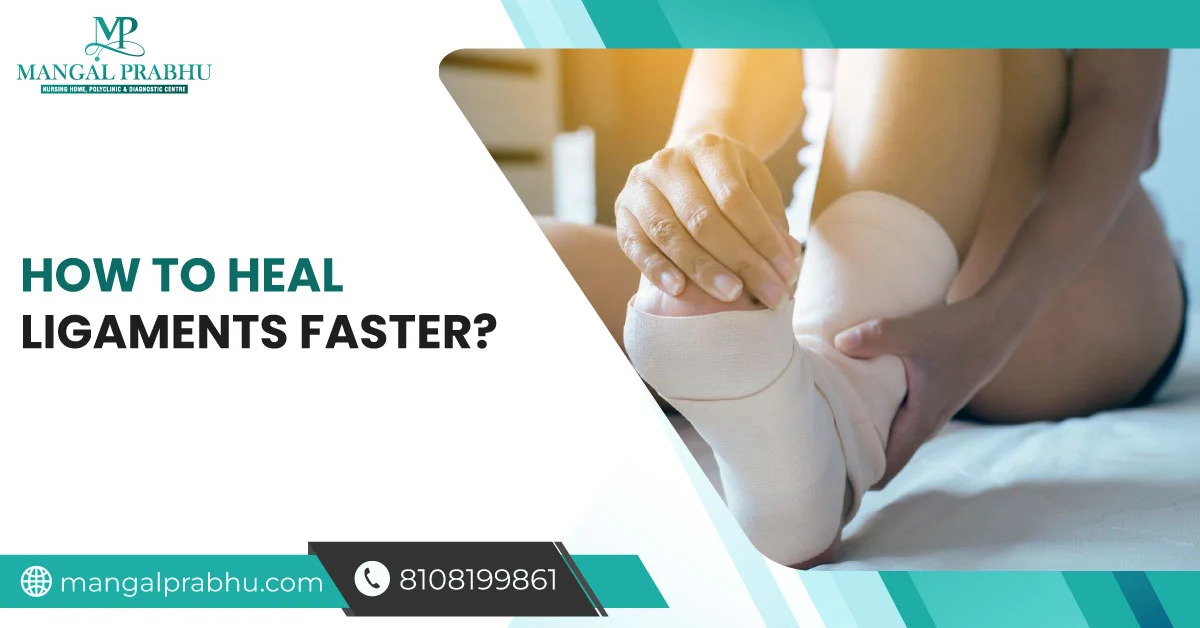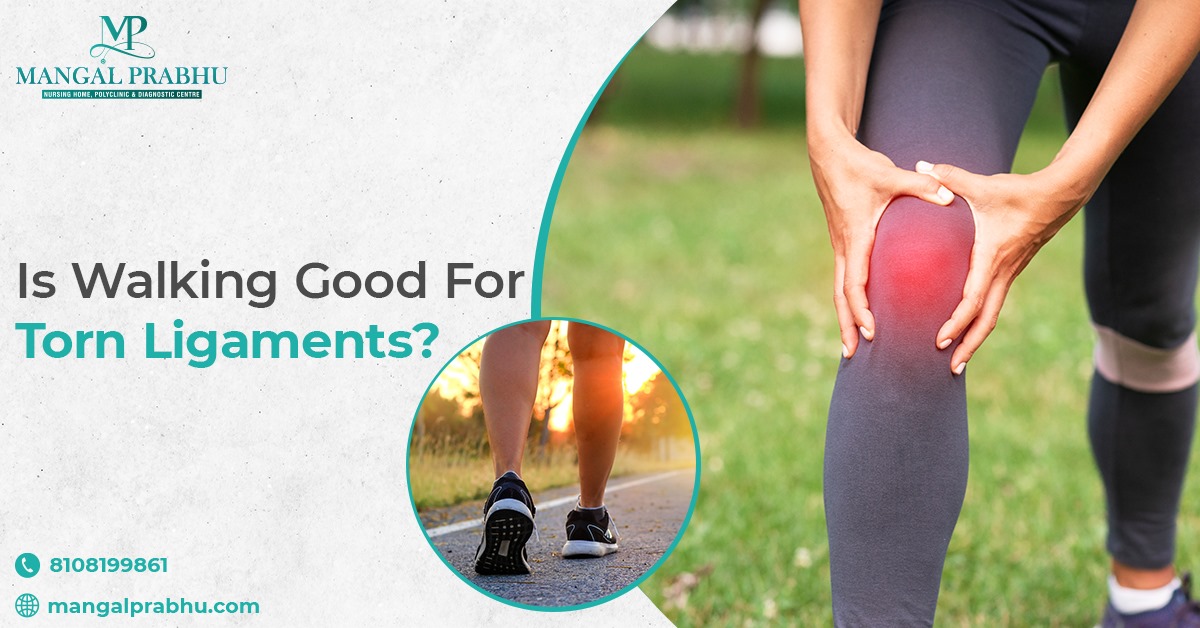
How to Heal Ligaments Faster?
Joints are complex systems of delivery consisting of string wire-like fibers named ligaments. These ligaments, despite being tough, still cannot be regarded as impregnable. They can break up and have sprains that may cause them pain and limit their motion. Thus, the best Orthopedic Hospital in Navi Mumbai can help an individual quickly diagnose and get the best possible treatment without any hassle. However, this guide takes up the issue of ligament injuries, revealing the tips of fast recovery and joint maintenance in the context.
1. What are Ligaments?
Ligaments allow stability to joints and are nothing like the strength of sturdy ropes connecting bones in your body. They do most of the job by inherently serving as the core support structures that hold the joints together while keeping any excessive motion at bay, which could lead to injury.
2. Causes of Ligament Injuries
- Sports injuries, such as twisting or overextending a joint during physical activity
- Accidents or falls that put stress on the ligaments
- Repetitive stress on the joints, common in occupations requiring repetitive motions
- Aging, which can weaken ligaments over time
3. Symptoms of Ligament Injuries
- Pain, especially when moving the affected joint
- Swelling and tenderness around the injured area
- Bruising or discoloration
- Instability or a feeling of the joint giving way
4. Risk Factors for Ligament Injuries
- Performing feet-on-ground activities or heavy sports, if not prepped or warmed up well, can be dangerous.
- Previous history of ligament injuries.
- Being overweight or obese can strain the joints.
- Having weak or imbalanced muscles around the joints.
5. How to Heal Ligaments Faster?
i) Proper Rest and Recovery
Grant your injured ligament the gift of rest, avoiding activities that exacerbate discomfort. Embrace aids like crutches or supportive braces to ease pressure.
ii) Ice Therapy
Ice becomes a soothing balm, applied regularly to the injured joint to quell swelling and alleviate pain.
iii) Compression
Grid up the injured area with bandages which have a squeezing force, and this fosters reductions of volume and proffers support.
iv) Elevation
Lay the healing member above the heart position when left alone (i.e. during rest periods) and watch blood flow improve through the reduction of swelling.
v) Physical Therapy
Work with a top-notch Orthopedic Doctor in Navi Mumbai at Mangal Prabhu Hospital who formulates treatment plans that propagate the development of supporting muscle.
vi) Medications
Medications help in reducing pain and get rid of inflammation when you consult your doctor.
vii) Surgical Interventions (if necessary)
In the worst cases, when ligament strength is available in hair’s width, the use of surgery reestablishes joint stability and function.
6. Tips for Preventing Ligament Injuries
- Warm-Up Rituals: Think of warm-ups before the exercise as the thing that prepares your muscles and ligaments for the challenges ahead.
- Weight Management: Maintaining a healthy weight would lessen the excess stress on your joints and ligaments.
- Mindful Movement: Avoid abrupt, uncontrolled movements, which can lead to some strain on your ligaments and keep going with smooth and soft motions instead.
7. Conclusion
Through the practice of rest, compensation remedies, prevention of injuries, and considering Mangal Prabhu Hospital, not only will you heal the ligaments faster, but also you will through a way build up the path of healthy joints to last forever.

Is Walking Good For Torn Ligaments?
Torn ligaments can be a painful and debilitating injury, often raising questions about appropriate activities during the healing process. This article will explore the nature of torn ligaments, their symptoms, diagnosis, and whether walking is a suitable exercise during recovery. Here, you can also learn about the Mangal Prabhu Hospital. It is a trusted healthcare facility with an experienced Knee Replacement Surgeon in Navi Mumbai.
What are Torn Ligaments?
Ligaments are strong, fibrous bands of tissue that connect bones. They also provide stability to joints. When subjected to excessive force or trauma, these ligaments can tear. Hence, it results in a condition known as a torn ligament. This injury most commonly occurs in joints like the knees and ankles.
What are the Symptoms of Torn Ligaments?
Torn ligaments typically present with a set of distinct symptoms, including:
- Pain and Tenderness
- Swelling and Bruising
- Limited Range of Motion
- Joint Instability
- Popping or Snapping Sensation
How to Diagnose Torn Ligaments?
Accurate diagnosis of torn ligaments is crucial for determining the appropriate course of treatment. A healthcare professional will typically use a combination of methods, including:
i) Physical Examination:
The healthcare provider will examine the injured area, looking for signs of swelling, tenderness, and joint stability.
ii) Imaging Tests:
X-rays or MRI scans may be ordered to assess the extent of the ligament injury and rule out any accompanying bone damage.
iii) Medical History:
A detailed discussion of the injury, including how it occurred and the progression of symptoms, is essential for diagnosis.
Also Read: Is Orthopedic Surgery Worth It?
Is Walking Good For Torn Ligaments?
Walking can be a beneficial activity during the recovery from torn ligaments. But you should approach it with caution and under the guidance of a healthcare professional. In many cases, initial treatment may involve rest and immobilization. However, controlled and gentle walking exercises may be introduced as part of a rehabilitation program as healing progresses.
Walking can help maintain joint mobility, prevent muscle atrophy, and improve blood circulation, all supporting healing. Following a structured rehabilitation program prescribed by a medical professional is crucial. Attempting to resume normal walking too soon or overexerting oneself can delay healing or lead to further injury.
Other Exercises That Can Help Reduce Pain and Heal Torn Ligaments
In addition to walking, various exercises can aid in reducing pain and promoting the healing of torn ligaments. These exercises may include:
- Range of Motion Exercises.
- Strengthening Exercises.
- Balance and Stability Exercises.
- Low-impact activities such as swimming or stationary cycling can improve cardiovascular fitness without placing excessive stress on the injured ligament.
Conclusion
Walking can be beneficial during the recovery from torn ligaments, provided it is done cautiously and under professional guidance. Initial treatment often involves rest, but a structured rehabilitation program may incorporate walking and other exercises as healing progresses.
If you have suffered a ligament injury or require expert guidance on your recovery, consult knee replacement surgeons at Mangal Prabhu Hospital, a leading Knee Replacement Hospital in Navi Mumbai. Remember that patience, adherence to the prescribed treatment plan, and avoiding activities that could hinder healing are key to a successful recovery.
